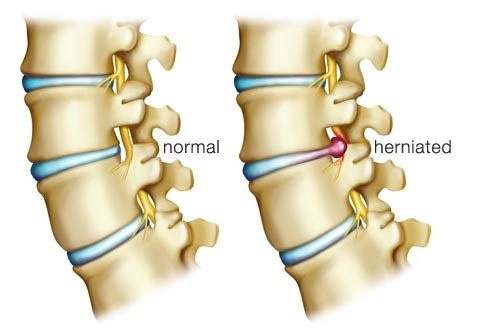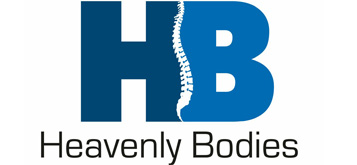Disc Prolapse & Scoliosis Treatment
Non-surgical treatment for Disc Prolapse
Disc Prolapse Treatment
A Prolapsed Disc commonly referred to as a ‘Slipped’ or ‘ Herniated’ disc occurs, when a gel like inner nucleus called ‘Nucleus Pulposus’ of an Intervertebral Disc Bulges or Seeps through a weakened region of an outer Fibrous ring, the annulus fibrosus disci intervertebralis.


Causes of Disc Prolapse
- Injuries or Trauma
- Poor Posture
- Certain abnormal motions like Twisting or Turning to lift heavy objects
- Weak and compensating muscles
- Sedentary Life Style
- Improper Exercises
Symptoms of Disc Prolapse
A Prolapsed Disc in the Lumbar Spine can cause Radiating Nerve Pain. Usually the symptoms are experienced only on one side of the body. In case of massive Prolapse, both sides of the body might get affected. Compression of the Caudaequina can cause severe nerve damage or Paralysis.
- Radiating Pain, down the legs in to the Calves and Feet due to Sciatic Nerve Compression
- Tingling Sensation in the affected area
- Numbness or Weakness in the Buttocks, Legs or Feet
Treatment for Disc Prolapse
Non-surgical treatment for Prolapsed Disc
Surgically removing the disc, that’s pressing on the nerve, is the Common Procedure. But, our Back is designed to use that Disc. Inactive and Compensation of muscles will cause the disc to impinge on the nerve. Posture Alignment Therapy will restore the normal muscle function, consequently relieving Impingement and Pain.
Spinal Stenosis, Spondylolisthesis, Spondylolysis and Spondylosis are needlessly daunting terms. Usually Stenosis involves of Formation of Calcium deposits as a result of Friction caused by muscles skeletal misalignment. The body always reacts to Friction. It has to, otherwise Vital Components will be Worn away. The bones defensive mechanism against friction is to generate an extra layer or blob of calcium. But this solution is not ideal, since the calcium interferes with the movement of the vertebrae. Given enough friction and enough calcium, the process creates Nerve Impingement. The Standard Surgical remedy is to remove the Lamina of the Vertebrae – Basically, one slope of the Arch or Ridge that runs along the Posterior of the Spine – enter the canal, and Scrape away the calcium. But this procedure is rarely necessary if the Lumbar, Thoracic and the cervical curves are restored to a functional state, the Spinal Cord and the branching nerve roots usually have enough room to operate without Interference. STENOSIS, SPONDYLOLISTHESIS, SPONDYLOLYSIS and SPONDYLOSIS occurs because of Muscular Dysfunction, as weak and compensating muscles allow the structure of the Spine to be displaced and damaged.

